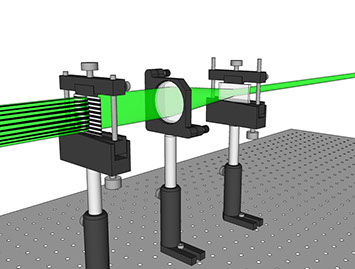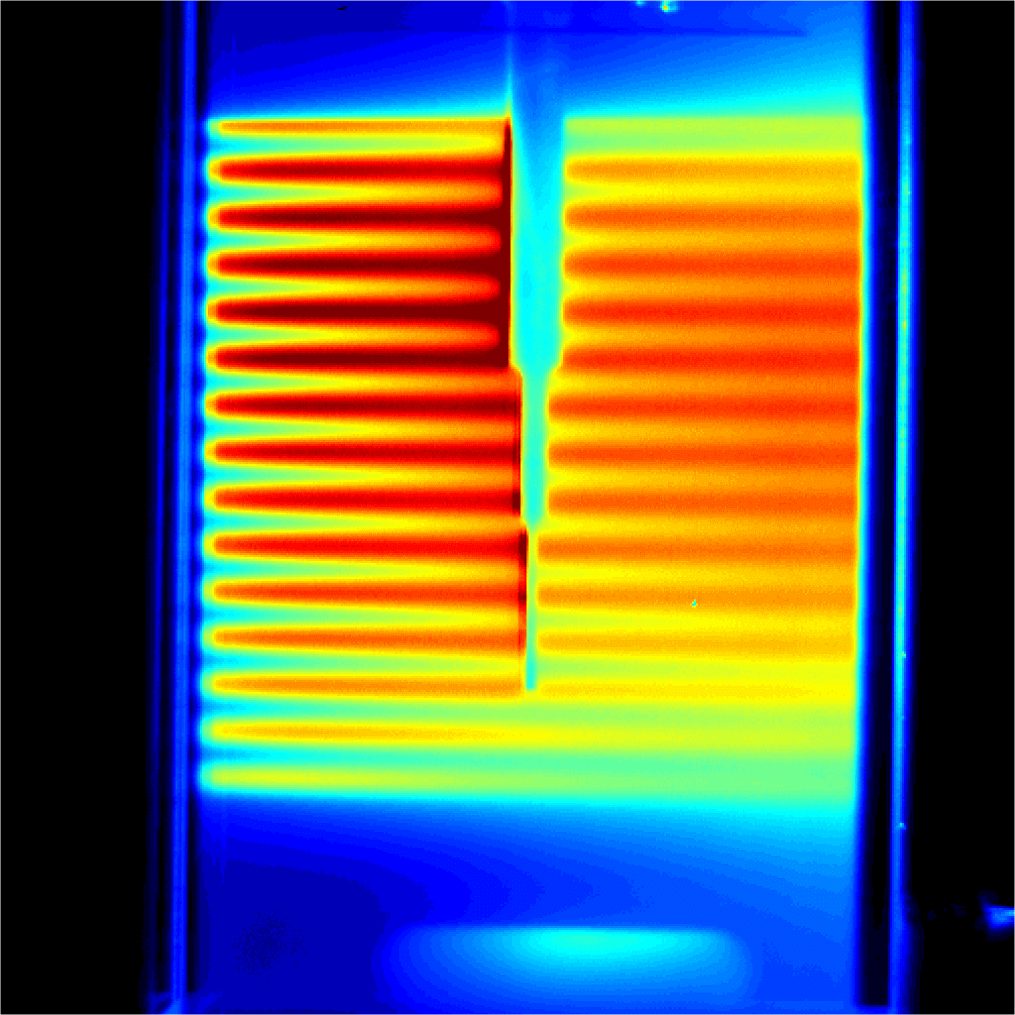
Laser sheet imaging

SLIPI is based on (1) laser sheet imaging and (2) Structured Illumination (SI). Laser sheet imaging is a common technique which uses a sheet of light in order to generated a signal from a thin section only. Seen from the side it gives a 2D view of the sample. In scattering media, the technique is sensitive to errors induced by multiple light scattering. Structured illumination aims at solving this issue.
The purpose of creating a "line structure" is to allow the user to differentiate between light that has been directly scattered from the diffused light. Only the light that is directly scattered keeps the line structure. The example to the right shows what happens when shifting the grating; only the line structure shifts while the background remains the same. By recording several modulated sub-images with a desired phase, one can remove the contribution from the multiply scattered light.
Difference between a conventional laser sheet (left) and a SLIPI measurement (right), for a GDI spray. The spray plumes are enhanced with SLIPI.
SLIPI
Structured illumination is primarily associated with microscopic imaging. The technique uses a special type of illumination scheme based on "lines pattern". In the figure above, a laser beam is sent through a transmission grating which periodically blocks light, thereby generating a line structure.
Two different ways of achieving an intensity modulated pattern.
Imaging
In this arrangement, a line grating is simply imaged, using a standard lens, onto the sample of interest. The advantage is (1) energy preservation and (2) simplicity. The disadvantage is (1) that it can generate residual lines, due to the higher harmonics present in the line grating.
Interference
In this arrangement, a line grating is illuminated, followed by Fourier filtering in the Fourier plane of an imaging lens. The purpose is to remove all but the two fundamental frequencies of the line grating. As these beams meet, they interfere and creates a "perfect" intensity modulation. The advantage is (1) "perfect" modulation and (2) good modulation depth over a long distance. The disadvantage is (1) that ~60% of the energy is lost in the filtering process.